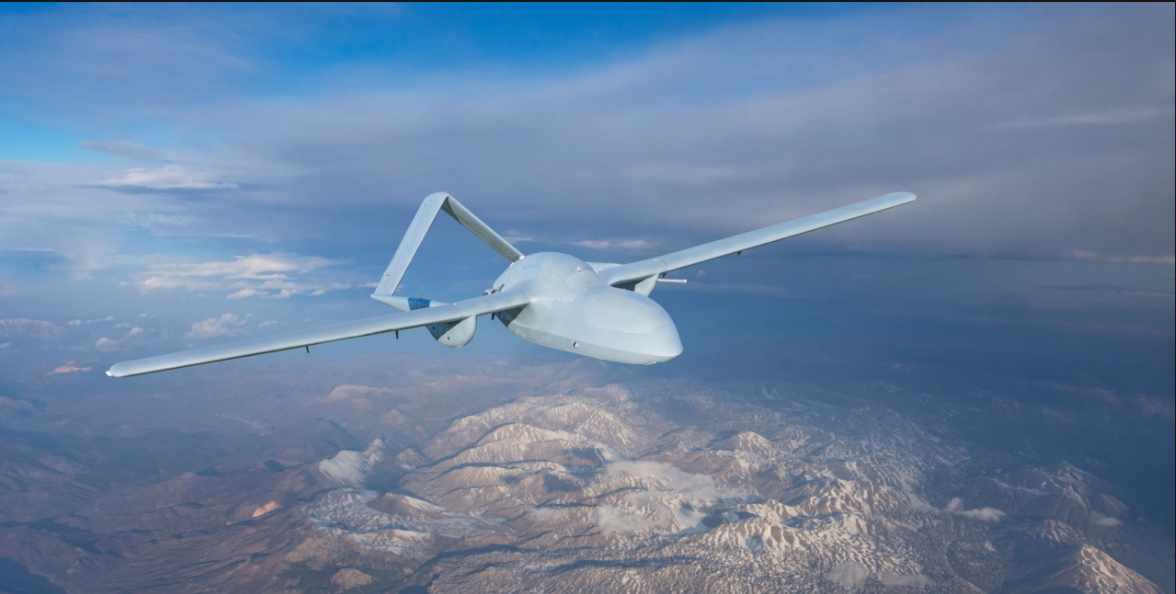How the US and Ukraine Can Redefine Drone Deterrence

The Ukrainian UAV sector’s baptism by fire will make it a strategic asset for NATO defense in the years to come.
Although the Russia-Ukraine war is the most drone-intensive conflict of the twenty-first century, the implications of this reality have only recently spilled beyond its borders. In August, Polish officials confirmed that Russian drones had crossed into their airspace before being shot down near the frontier. Around the same time, Danish and Norwegian airports were reportedly targeted by suspected drone disruptions, which local analysts described as highly likely to be Kremlin-backed.
These incidents are not isolated provocations; they function as stress tests—probing NATO’s defenses against a rapidly evolving form of warfare. With Western military leaders increasingly alarmed about how fast the drone battlefield is changing, the alliance faces a clear imperative: it must integrate Ukraine’s wartime innovations into its own defense planning and production cycles.

Russia’s invasion has triggered a transformation in drone warfare so profound that even the United States—with its vast defense industry and cutting-edge military—has struggled to adapt. Washington excels at building advanced fighter jets, tanks, and precision-guided missiles. However, when it comes to mass-producing inexpensive, expendable systems at a rapid pace, America lags behind. US troops also lack the combat experience in drone operations that Ukrainian soldiers have been forced to acquire.
The Pentagon has acknowledged the gap. In July, Secretary of Defense Pete Hegseth disseminated a memo to senior officers outlining a plan to accelerate the US military’s adoption of drones. Since then, US troops have begun experimenting with 3D-printed drones and training on simulators. These are important steps, but they also underscore a sobering reality: America is racing to catch up.
In contrast, Ukraine has fostered a dynamic ecosystem of drone development that is both resilient and rapidly evolving. According to Ukraine’s Ministry of Defense, more than 95 percent of the drones deployed on the front line are domestically manufactured. What makes these systems particularly effective is the rapid cycle of innovation.
While the Pentagon’s procurement process can take years or even decades, Ukrainian firms often refine designs in weeks—sometimes days—thanks to direct feedback from soldiers on the front lines. This feedback loop ensures that new models are tailored to battlefield realities such as electronic jamming, trench warfare, and contested skies. In many cases, Ukrainian drones now outperform Western commercial alternatives precisely because they are designed for war, not peacetime demonstrations.
One of the clearest examples is Ukraine’s development of night-fighting drones. Ukrainian nighttime bombers, collectively known as “Baba Yaga,” have become among the most feared weapons on the battlefield. Heavy-lift UAVs such as Reactive Drone’s Kazhan (“Bat”) combine strike capacity with modularity, able to carry NATO-standard artillery shells, tank rounds, and mines.
Unlike many commercial-grade Western drones, the Kazhan is purpose-built for combat. Equipped with a dual thermal and daylight camera, the drone is optimal for both nighttime and daytime use. With a domestically developed radio and an ability to swiftly navigate predetermined coordinates, Kazhan is highly resilient against EW systems and is able to fulfill its missions even against jamming attempts. Ukrainian sources stress that such drones are continuously tested in real combat conditions—something Western systems rarely undergo before deployment.
As Moscow edges closer to direct confrontation with NATO, the alliance should recognize that Ukraine’s defense sector is a strategic asset in its own right. The future of warfare is unmanned, and Ukraine’s battle-tested ingenuity is indispensable for preparing NATO for that future. Congress has already opened the door. The House and Senate Armed Services Committees’ $150 billion defense reconciliation bill, which earmarks historic investment for drone and uncrewed systems, presents a rare opportunity. By establishing joint US-Ukraine ventures, the West can accelerate the integration of cutting-edge UAVs into NATO forces and also create a resilient production base capable of outpacing Russia and deterring further aggression.
The war in Ukraine has revealed both the vulnerabilities and the opportunities of modern conflict. Russia’s drone incursions into NATO territory highlight the urgency; Ukraine’s pace of innovation points to the solution. This is no longer only about keeping Ukraine in the fight—it is about preparing the West for the wars of tomorrow. The United States has the resources, Ukraine has the battlefield experience, and together they have the opportunity to redefine deterrence in the drone age.
For this partnership to work, Kyiv will need to complement its wartime agility with policy reform. Bureaucratic hurdles that slow foreign investment and defense-sector cooperation should be dismantled. Ukraine has already demonstrated its ability to adapt its defense industry at an extraordinary speed. Now it must apply that same urgency to its policymaking—so that its battlefield ingenuity can help secure NATO’s future.
- Questions and Answers
- Opinion
- Motivational and Inspiring Story
- Technology
- True & Inspiring Quotes
- Live and Let live
- Focus
- Geopolitics
- Military-Arms/Equipment
- Segurança
- Economy/Economic
- Art
- Causes
- Crafts
- Dance
- Drinks
- Film/Movie
- Fitness
- Food
- Jogos
- Gardening
- Health
- Início
- Literature
- Music
- Networking
- Outro
- Party
- Religion
- Shopping
- Sports
- Theater
- Health and Wellness
- News
- Culture

